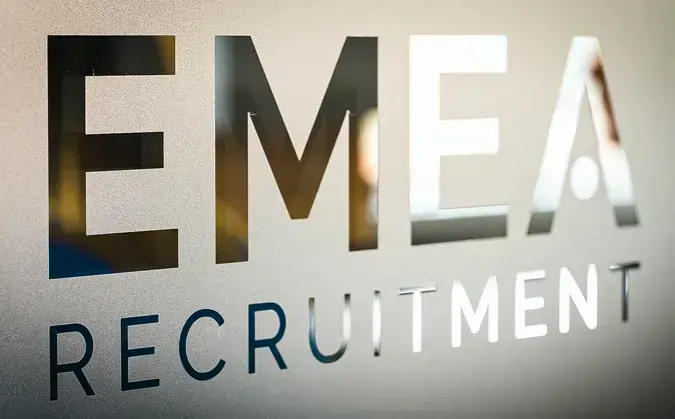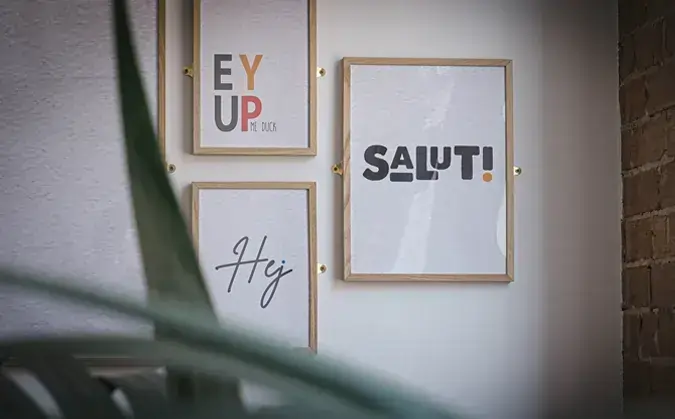5 Steps to Building Diverse Teams – Executive Insights

Creating diverse teams is a strategic imperative for businesses, from driving financial performance to encouraging innovation. To celebrate Pride Month, we’re sharing key insights from senior executives on how to build diverse teams and foster inclusivity in the workplace.
Laura Montagu, the VP HR EMEA & India at Crocs, Inc., who was previously Senior Director HR EMEA at Under Armour in Amsterdam, explains why diversity is not enough: “It’s about building diverse teams and helping them thrive by creating a strong sense of belonging, while – at the same time – allowing our teammates to feel appreciated for their own uniqueness.”
Organizations with inclusive cultures are twice as likely to meet or exceed financial targets as those without, three times as likely to be high-performing, six times more likely to be innovative and agile, and eight times more likely to achieve better business outcomes, according to a 2024 study by Deloitte.
We take a look at the five steps leaders should take to create diverse teams and foster inclusivity:
- Act as role models
Diversity initiatives can’t rely on policies alone – they should be championed from the top. When leaders embody these principles, they send a clear message to their teams that diversity is a core value of the organization.
“A fundamental starting point is that our leaders act as role models,” says Laura.
It’s a sentiment mirrored by Cristina Stefan, Corporate Business Planning & Performance, Head of Global Opex and HQ Business Control at Wavin, a business group within Orbia: “You need open-minded leaders in place who truly and authentically believe in the power of diversity.”
- Nurture inclusivity
Hiring diverse talent without inclusion can lead to tokenism.
By nurturing diversity of thought, Laura was able to build an inclusive and collaborative community across the entire business at Under Armour, by seeking out different voices and encouraging input and ideas from all levels.
Cristina agrees: “Inclusion is the fuel that powers the diversity engine. It’s how we encourage our minority groups to collaborate and develop, feel valued, respected and empowered.”
At Wavin, one example is creating equal opportunities and flexible working options for mothers returning to work after maternity leave, “so they feel supported and able to thrive”.
- Implement your values
In fact, embracing diversity is a core value at Wavin, which is embedded in everything the business does and – importantly – is constantly evolving.
The organization measures diversity by looking at the gender of those in top positions, how many people with disabilities are hired, what the ethnicity split is, LGBTQ+ representation, and more, explains Cristina.
Alongside recording workforce demographics, businesses can also measure certain hiring metrics, such as the percentage of diverse candidates in the recruitment pipeline and the source of hire, which tracks whether the organization is utilizing inclusive talent pools.
While Laura accepts the data that highlights the impact of Equity, Diversity & Inclusion on a business, she argues that it’s “also just the right thing to do”.
Under Armour reflects this through its policy of providing 40 hours of paid time off for employees to give back to causes they are passionate about. In 2023, the team clocked up more than 6,000 hours.
The business also rolls out regular training for leaders to “build cultural competency and create inclusive environments”.
- Drive diversity initiatives
Orbia has developed projects to target its goal of increasing the representation of women and other underrepresented groups throughout its five business groups (including Wavin) and leadership pipeline.
Cristina explains how this looks in practice: “The company has developed initiatives from talent acquisition guidelines to our Orbia Women’s Network (OWN) mentorship program, which is helping to accelerate the development and visibility of female talent in what tends to be a very male-dominated industry.
“It’s a good example of inclusion in action, because it encourages people to speak up, to turn challenges into opportunities with a positive mindset, show empathy, and benefit from different perspectives.”
Cristina summarizes her experiences for other leaders: “That blend of diversity and inclusion is how you create strong, brave teams and a working environment where everyone can perform at their best.”
- Review hiring processes
An essential step for leaders looking to create diverse teams and foster inclusivity within the organization is to review your current hiring policies.
By tracking diversity metrics within the recruitment process, you will be in a better position to understand any areas you can address and improve. It is also important to reduce bias during candidate selection and interviews, by ensuring your requirements are competency-based.
At EMEA Recruitment, we act as a neutral third party in the recruitment process, basing our candidate searches on skills and experience. We also utilize Inclusive Linguistics principles in all communications with prospective employees to encourage applications from a diverse pool of professionals.
If you need any support with building diverse talent shortlists, please contact us to find out how we can help.
We’re proud to be the ED&I recruiter of choice for some of the most prestigious businesses across Europe.







 It was a lesson that also built his resilience: “Some dear colleagues took me aside and provided honest feedback, such as, ‘You may be used to that, but please consider that the clocks tick a bit differently here.’ They also gave me advice on cues and the natural rhythm of a conversation when you want to get to a decision.”
It was a lesson that also built his resilience: “Some dear colleagues took me aside and provided honest feedback, such as, ‘You may be used to that, but please consider that the clocks tick a bit differently here.’ They also gave me advice on cues and the natural rhythm of a conversation when you want to get to a decision.”




You can also use your social account to sign in. First you need to:
Accept Terms & Conditions And Privacy Policy